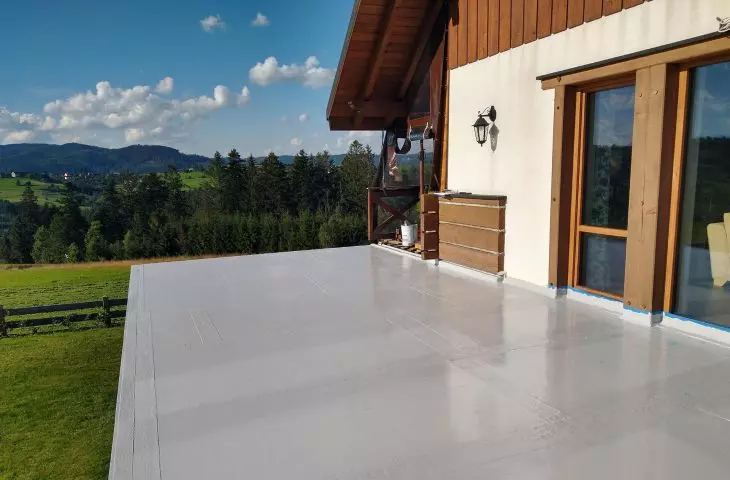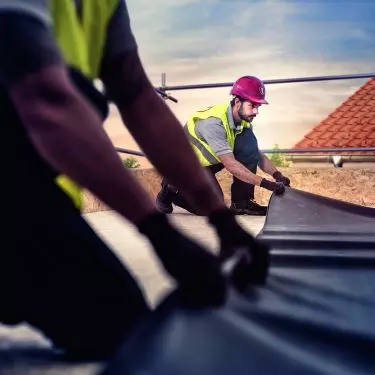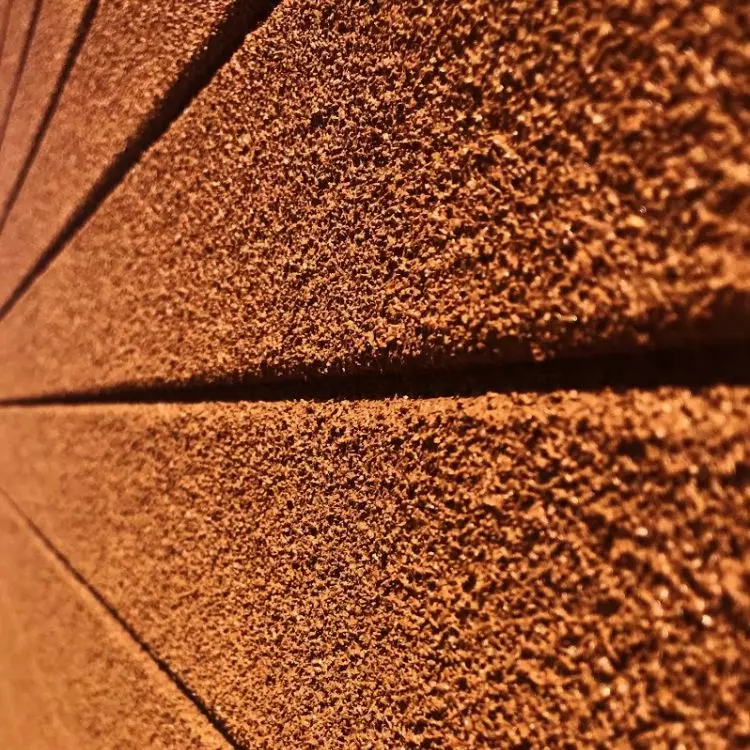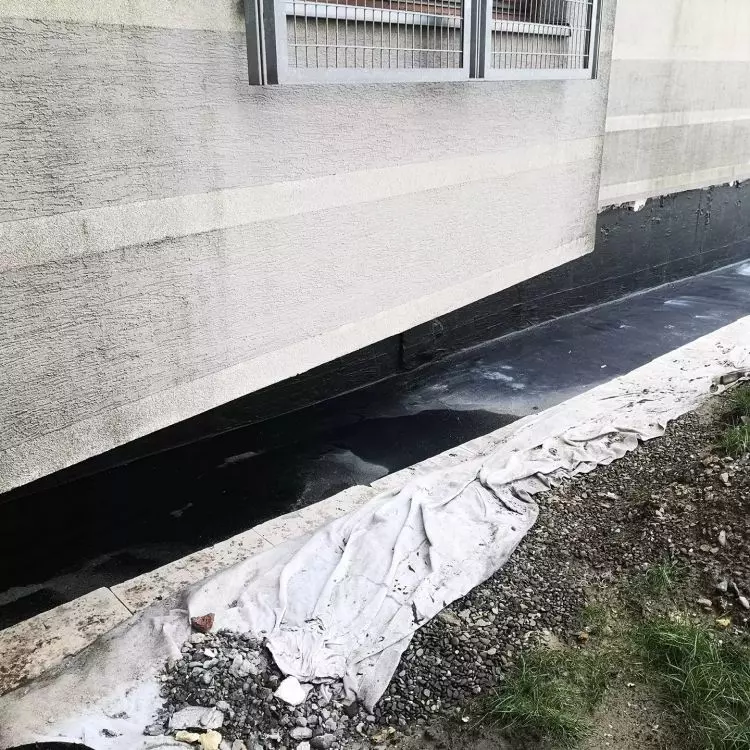Waterproofing is a key component of construction that plays an extremely important role in ensuring the durability and functionality of the structure. Without proper waterproofing, a house is prone to numerous problems, such as dampness, structural damage, mold and corrosion. In our article, we will take a closer look at the issue of waterproofing, why it is so important, what types of waterproofing are avaible, and what materials and techniques can be used to provide effective protection against water.
Waterproofing - a guide
What is waterproofing?
Waterproofing is the process of protecting a building structure from water and moisture. It is a key component of construction that helps prevent moisture and damage to building materials, and protects the interior of the building from moisture that can lead to mold and mildew, among other things.
Waterproofing is the process of protecting a building's structure from the effects of water and moisture
© GALECO
Where to use waterproofing?
Foundations
Waterproofing of foundations is extremely important because it prevents water from entering basements or underground. Special waterproofing membranes or coatings are often used on the exterior of foundations.
Exterior walls
Waterproofing is used to protect a building's exterior walls from rain and moisture. It is done by placing waterproofing coatings on the outside of the walls or waterproofing membranes under the plaster.
Roofs
Roofs are particularly vulnerable to rain and snow. Various materials, such as special roofing and roofing membranes, are used to ensure their effective waterproofing.
Terraces, balconies and swimming pools
Surfaces such as terraces, balconies and swimming pools require special waterproofing materials to prevent water from leaking into the building or structure.
Interior walls
Although waterproofing interior walls is not as common as on the outside, it can be used in rooms that are particularly vulnerable to moisture, such as bathrooms.
Floors
Waterproofing floors is important in rooms with higher levels of moisture, such as in basements or on the first floor of a building.
Where to buy waterproofing materials?
Waterproofing materials from reputable companies are more effective and last longer. Buying materials from unreliable sources can lead to problems such as water leaks, structural damage and rising repair costs. A proven manufacturer will assure you that you are using high quality and performance materials. One such company is CANADA RUBBER. Sanier's offerings are also worth noting. The full list of manufacturers we recommend can be found in the search engine of the Products for Home portal under the keyword "waterproofing".
To waterproof you can use membranes, roofing membranes, coatings, bituminous compounds and reinforcement fabrics
© CANADA RUBBER
What use to waterproof?
Waterproofing membranes
Waterproofing membranes are flexible materials that are resistant to water and moisture. They can be made of various materials, such as:
-
PVC (polyvinyl chloride): PVC is a popular material for creating waterproofing membranes because it is durable and resistant to mechanical damage.
-
EPDM (ethylene-propylene-diene-monomer): EPDM is a rubbery material that is flexible and UV-resistant.
-
TPO (thermoplastic olefinic): TPO is a thermoplastic material that is durable and easy to install.
Roof films
Roof membranes are thin sheets of material that are used on roofs to provide waterproofing. They are usually made of materials such as asphalt, butyl rubber or bitumen, and then coated with a protective layer.
Waterproofing coatings
Waterproofing coatings are liquid materials that can be applied to surfaces such as roofs, terraces, pools and walls. They can be made of various substances, such as bitumen, epoxy resins or polyurethanes.
Bituminous masses
Bituminous masses are thick bitumen-based substances that are applied cold or hot. They are often used for waterproofing foundations, walls and roofs.
Insulation materials integrated with waterproofing
Some insulation materials, such as polyurethane foam or polystyrene foam, are available with an integrated waterproofing layer. They can be used on floors, walls or roofs.
Reinforced waterproofing fabrics
Reinforced fabrics are materials that combine the flexibility of membranes with the strength of reinforcement, such as fiberglass. They are used in areas that require extra strength, such as around the corners of a building.
Waterproofing is used on foundations, exterior and interior walls, roofs, terraces, balconies, swimming pools and floors
© Sanier
How long does waterproofing dry?
The drying time of waterproofing depends on a number of factors, including the type of waterproofing material, weather conditions, the thickness and type of waterproofing layer, as well as the moisture content of the substrate. In general, dry and favorable conditions can shorten drying time, while rainy or humid conditions can prolong the process. Bituminous mastics, such as cold or hot mastics, liquid or paste coatings, and waterproofing membranes usually dry relatively quickly within a few hours to a few days. Roofing membranes, which are used on the roof as a waterproofing layer under the roofing, usually also dry relatively quickly. This time depends on the type of film and the temperature.
Is it necessary to do priming before waterproofing?
Priming is often recommended during waterproofing work, but this depends on the type of waterproofing material and the substrate on which the waterproofing is applied. If the substrate is rough, porous or has low adhesion, priming may be especially important. For some bituminous mastics, resin-based coatings, or films, priming the surface may be recommended. This is to ensure better adhesion of the waterproofing material to the substrate, as well as to improve the durability and effectiveness of the waterproofing. It is always advisable to follow the recommendations of the manufacturer of the waterproofing material. Most often, it will specify if and what priming is required or recommended for a particular product.
***
We encourage you to use the database of reputable and reliable insulation manufacturers we are building in the Products for the Home portal and the articles we publish about insulation.
































